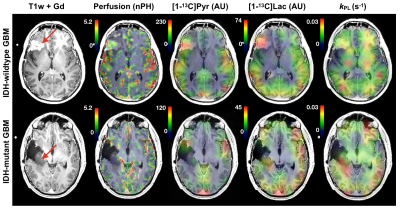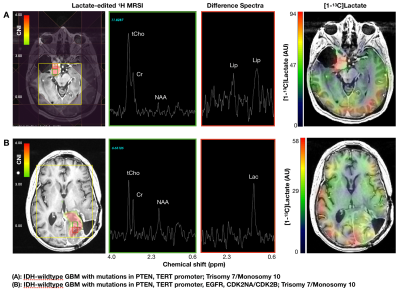Adam W Autry1, Sana Vaziri1, Marisa LaFontaine1, Jeremy W Gordon1, Hsin-Yu Chen1, Yaewon Kim1, Javier Villanueva-Meyer1, Susan M Chang2, Jennifer Clarke2, Duan Xu1, Janine M Lupo1, Peder EZ Larson1, Daniel B Vigneron1,3, and Yan Li1
1Department of Radiology and Biomedical Imaging, University of California San Francisco, San Francisco, CA, United States, 2Department of Neurological Surgery, University of California San Francisco, San Francisco, CA, United States, 3Department of Bioengineering and Therapeutic Sciences, University of California San Francisco, San Francisco, CA, United States
1Department of Radiology and Biomedical Imaging, University of California San Francisco, San Francisco, CA, United States, 2Department of Neurological Surgery, University of California San Francisco, San Francisco, CA, United States, 3Department of Bioengineering and Therapeutic Sciences, University of California San Francisco, San Francisco, CA, United States
Multi-parametric 1H and hyperpolarized carbon-13 (HP-13C) distinguished between IDH-mutant and IDH-wildtype GBM, demonstrated heterogeneity among IDH-wildtype GBM imaging features, and provided further evidence of aberrant HP-13C metabolism among molecular glioma subtypes.

Figure 1. A patient with IDH-wildtype GBM (Top)
displays a CE lesion, which contains elevated 1H
perfusion. Accompanying HP-13C EPI data demonstrate the related
elevation in total [1-13C]pyruvate and [1-13C]lactate signal. However, because of the perfusion
abnormality, the kPL map
fails to provide visual conspicuity. By comparison, the patient with the non-enhancing
IDH-mutant GBM (Bottom) displays a weakly perfused lesion, with lower
relative signal from [1-13C]pyruvate and [1-13C]lactate.
The kPL map for this patient clearly highlights the lesion.

Figure 2. A 1H MRSI CNI map overlaid on a T1w post-Gd image of a patient
with IDH-wildtype GBM (A). Corresponding lactate-edited spectra from two
adjacent voxels show CNI > 11 (green
voxel) and lipid from the difference spectra (red voxel).
Despite lower 1H-lactate, the HP-13C data demonstrated
abundant [1-13C]lactate production. Another patient
with IDH-wildtype GBM presented with a larger infiltrative mass (CNI > 6; green voxel) as well as 1H-lactate (B). In
this case, HP [1-13C]lactate production was less pronounced, perhaps
owing to the existing pool of steady-state 1H-lactate.